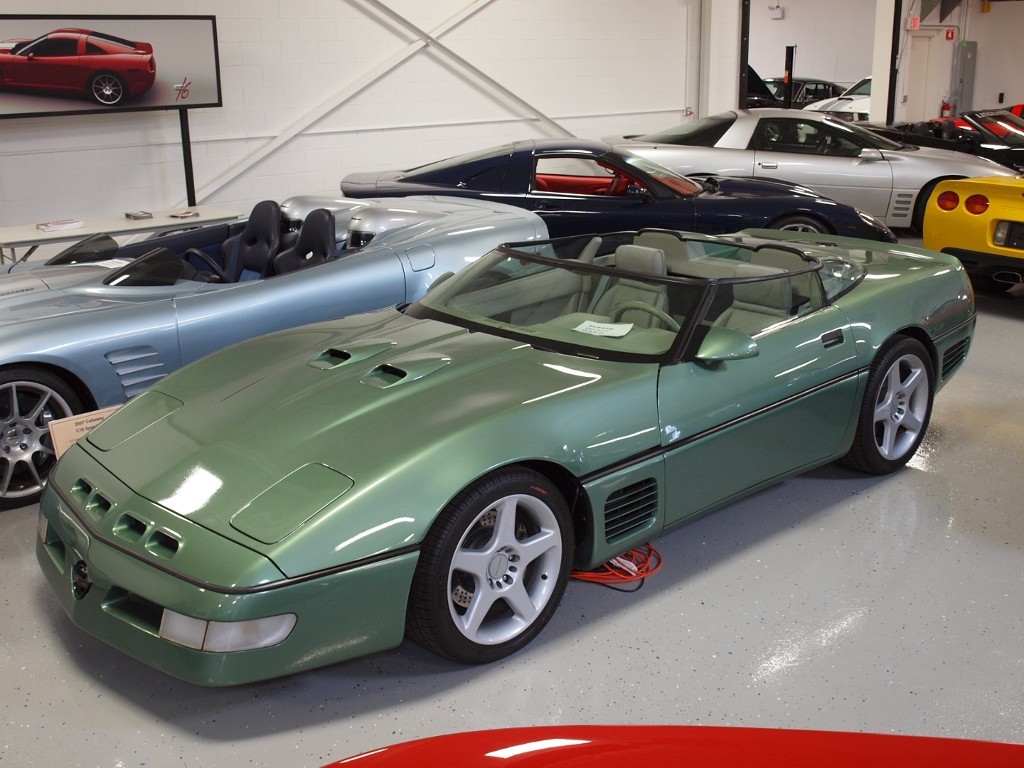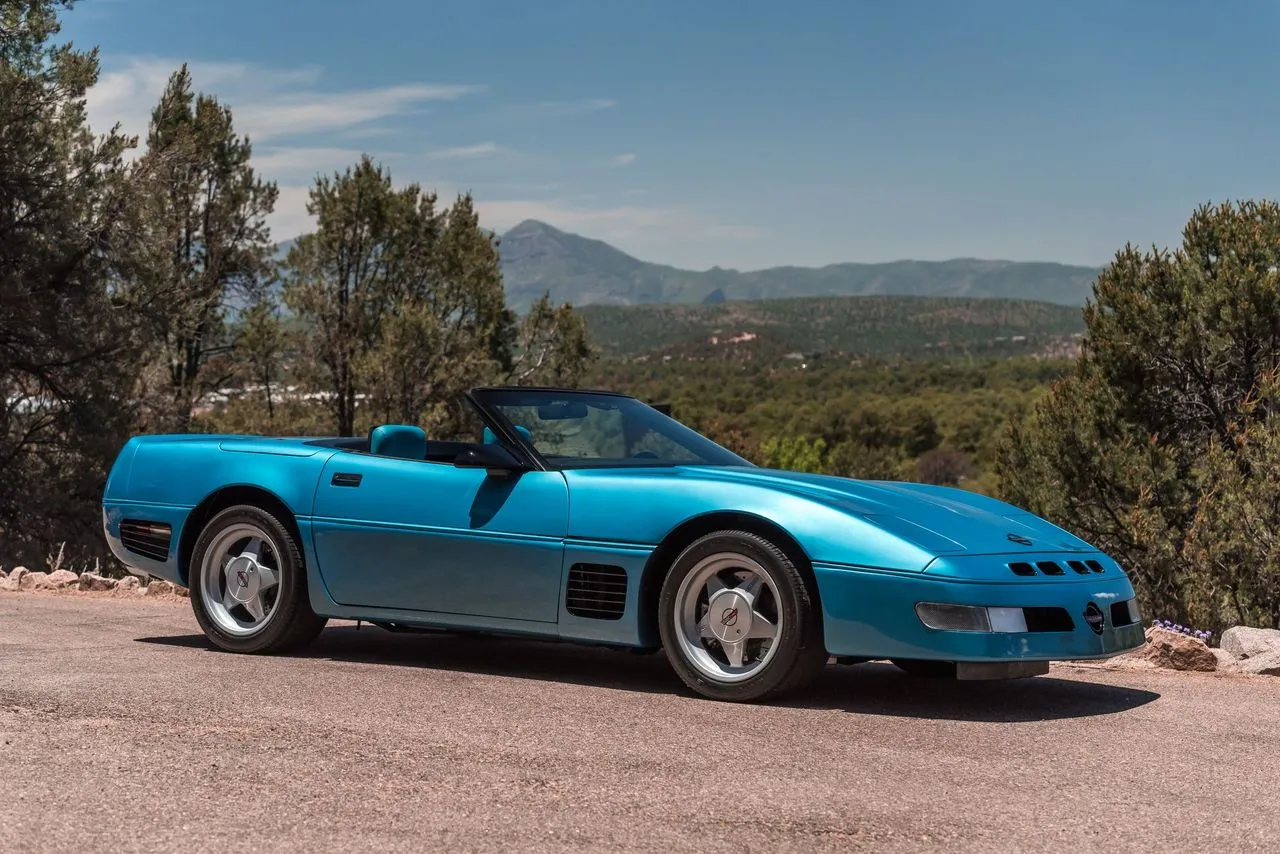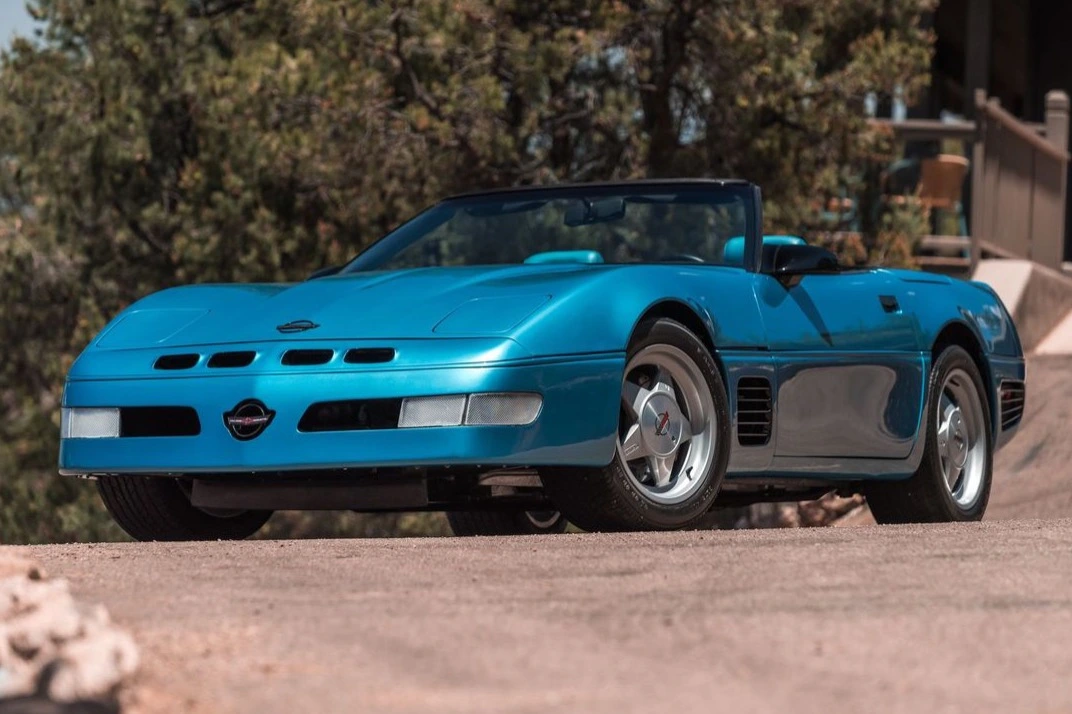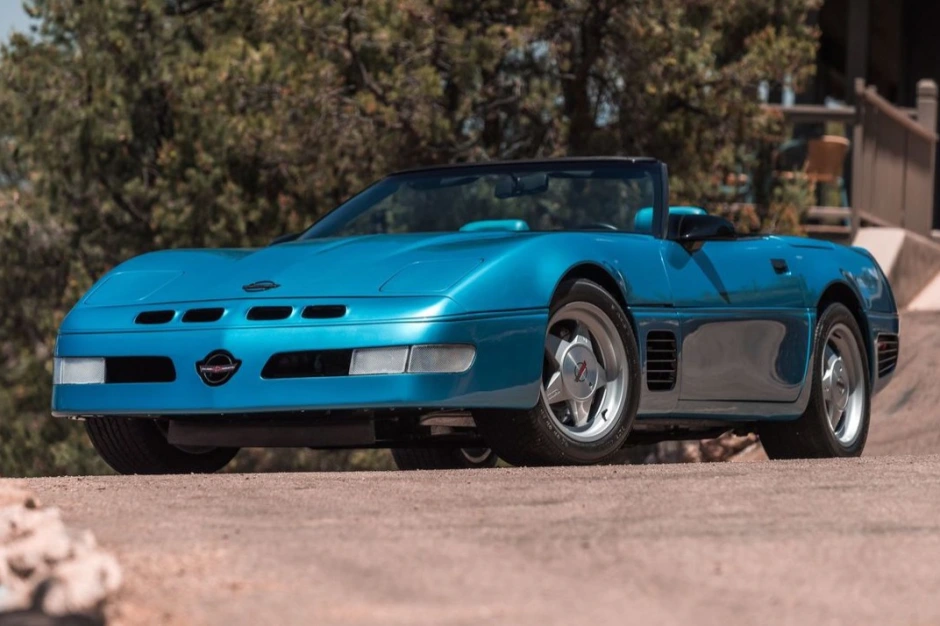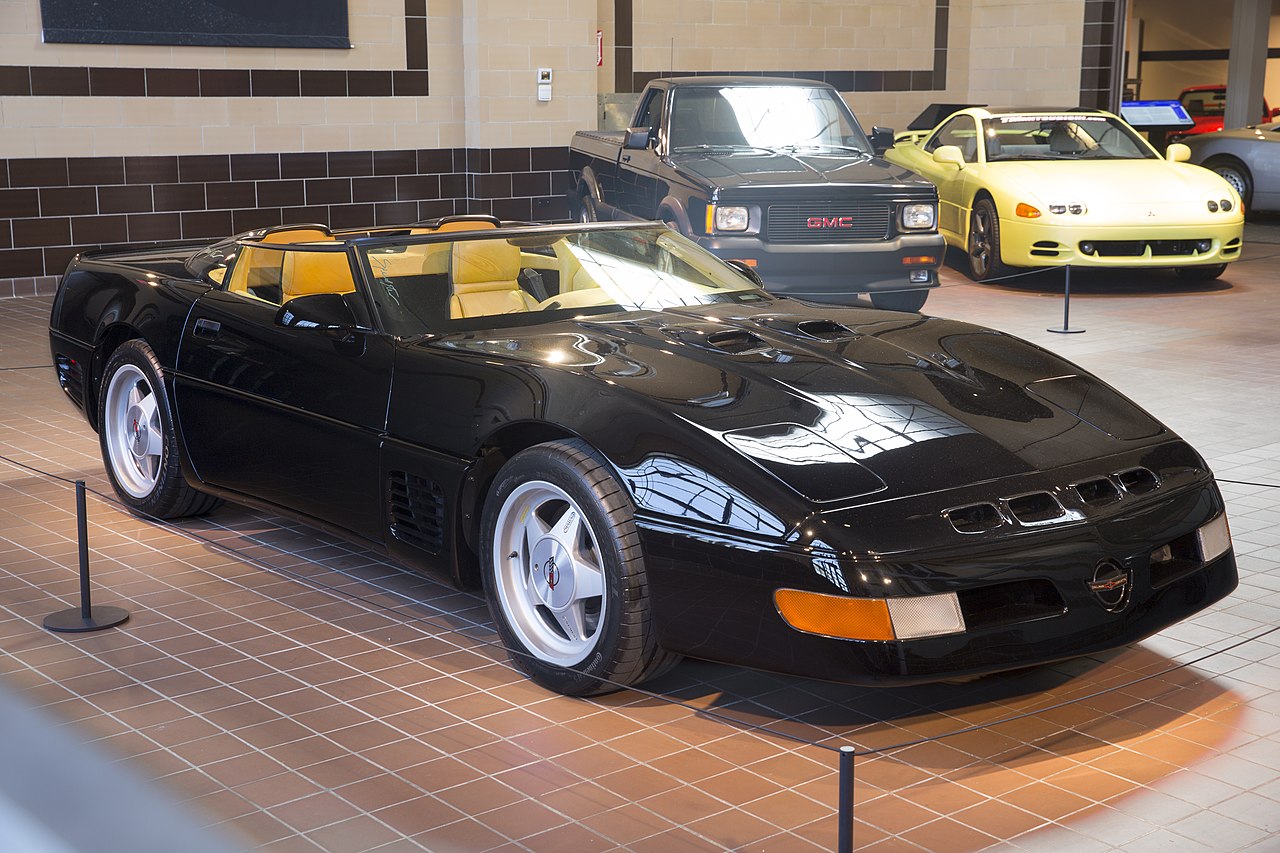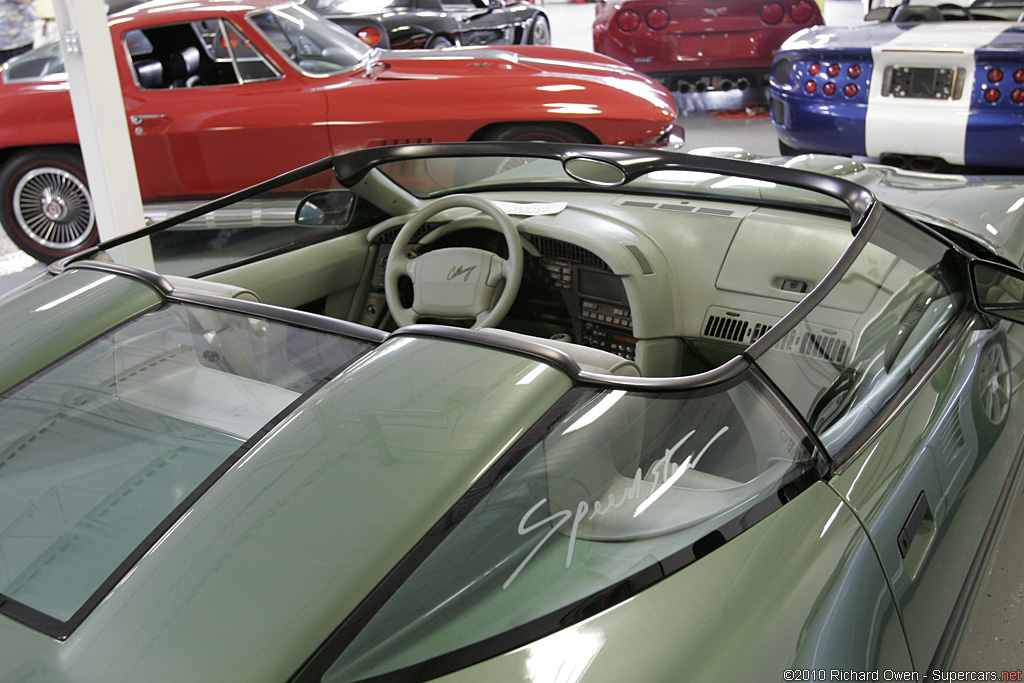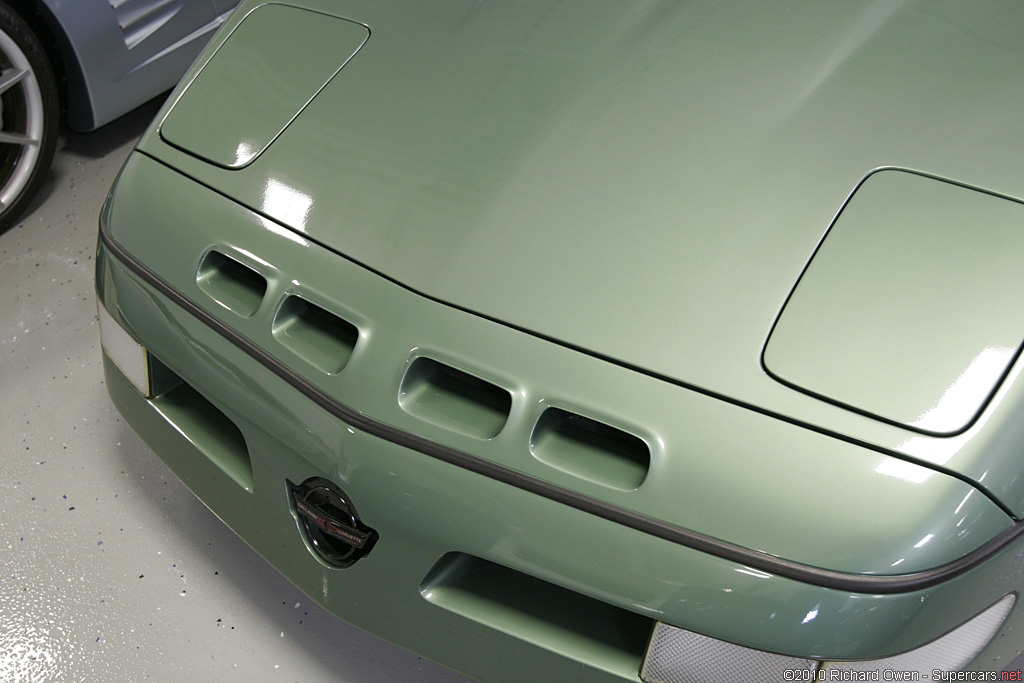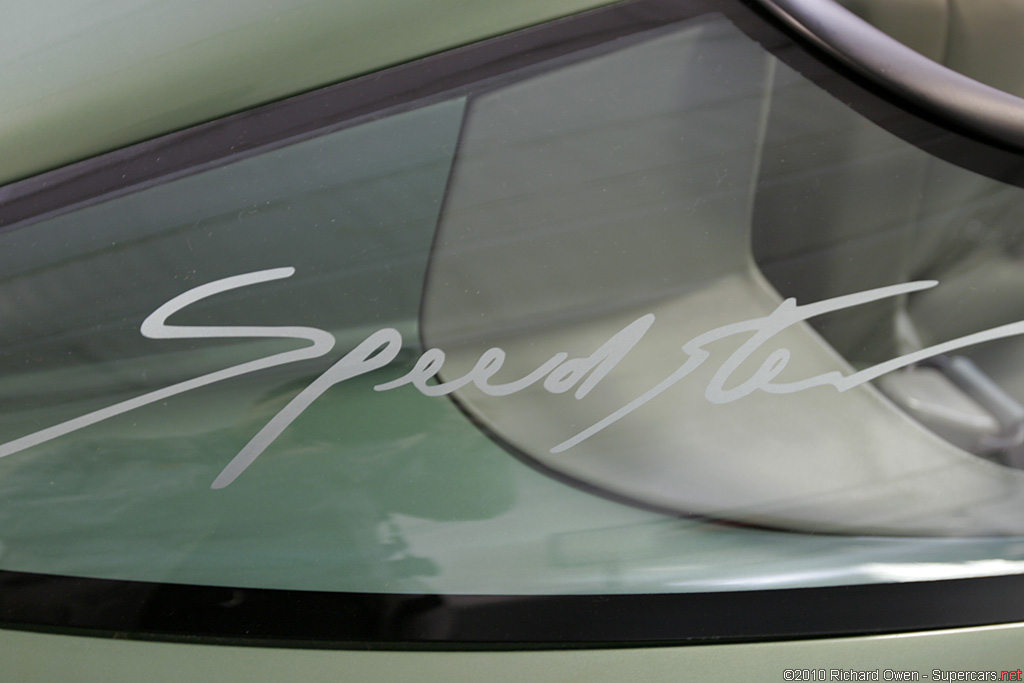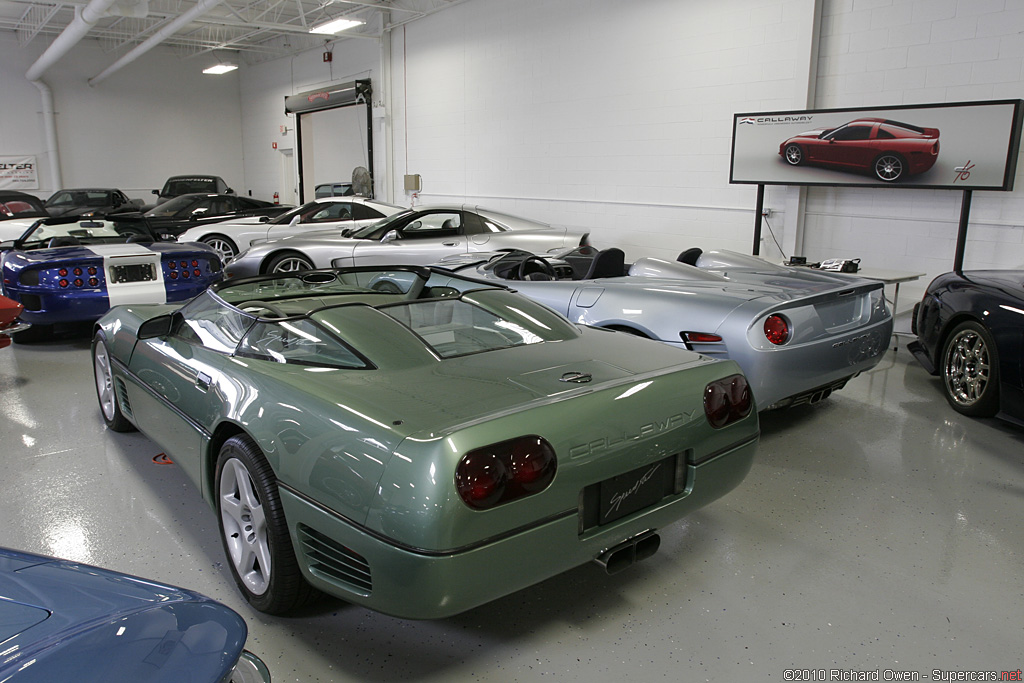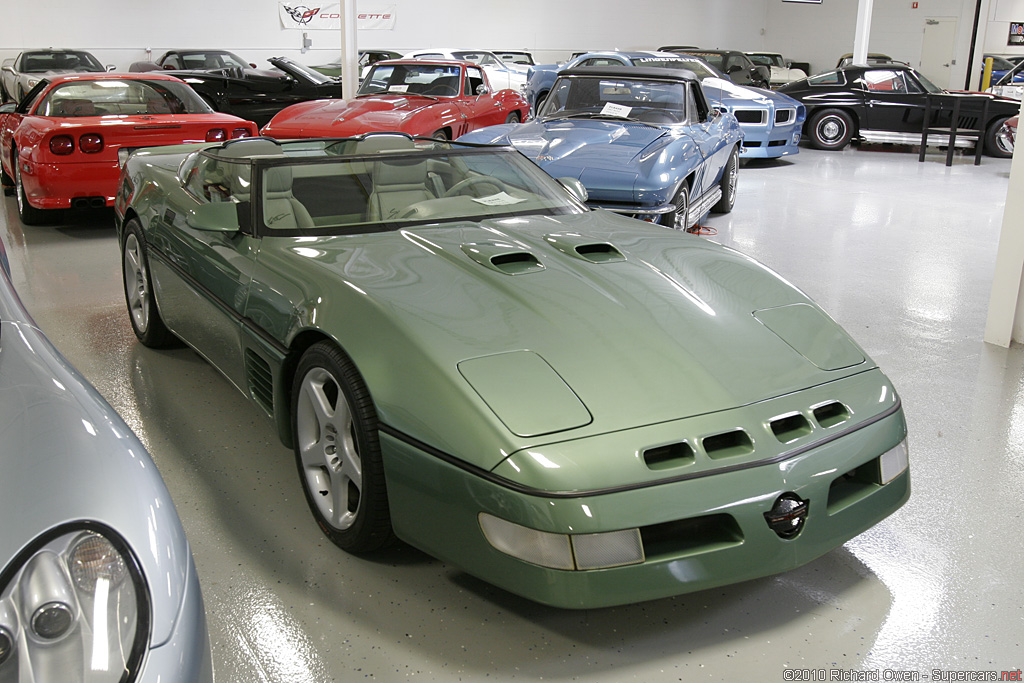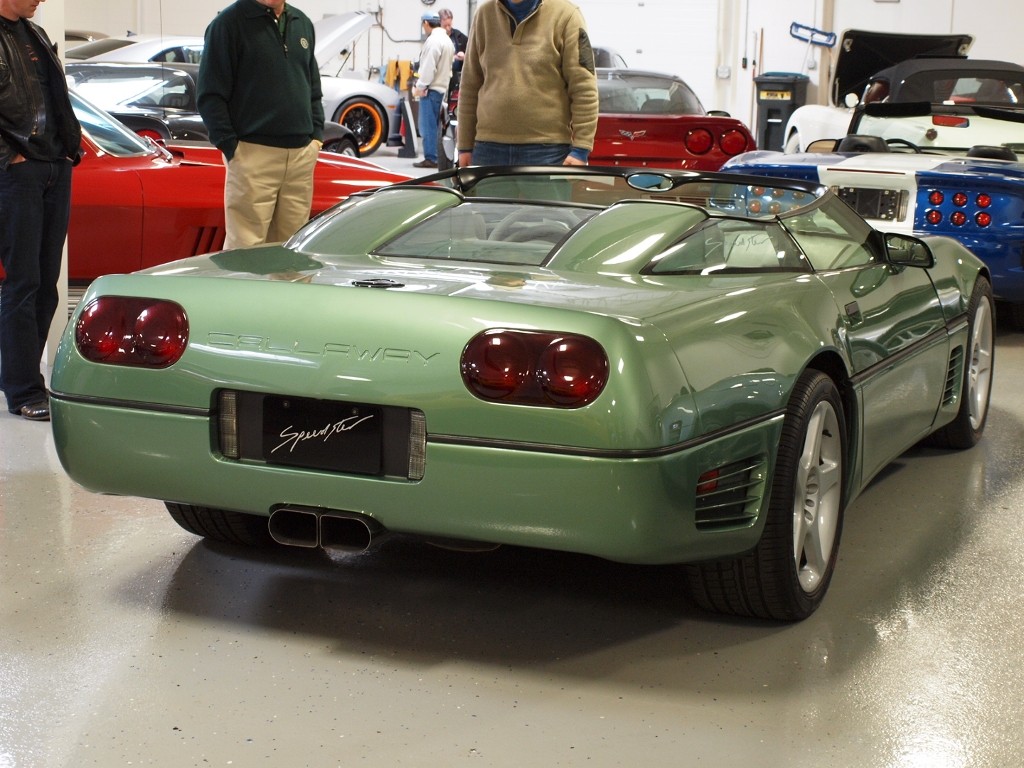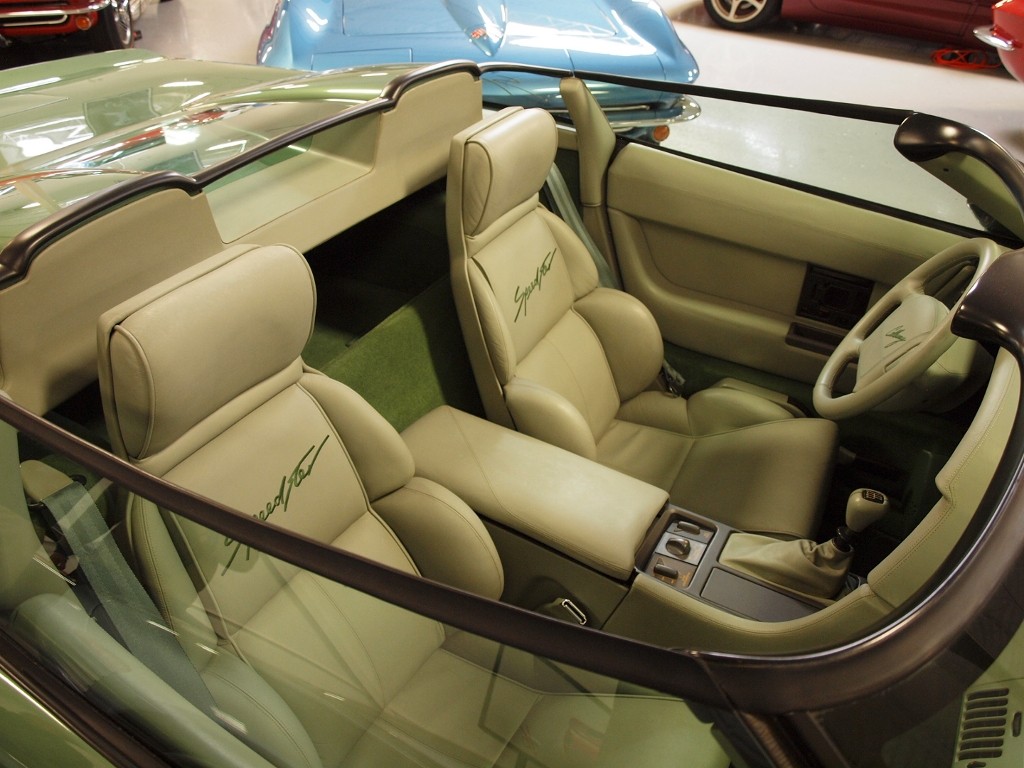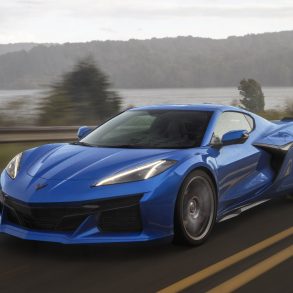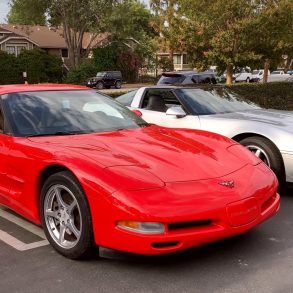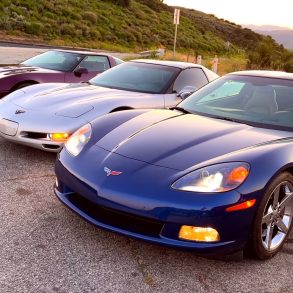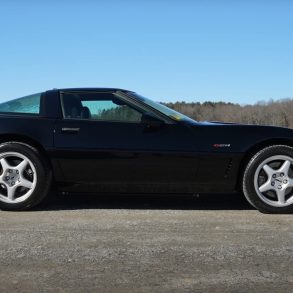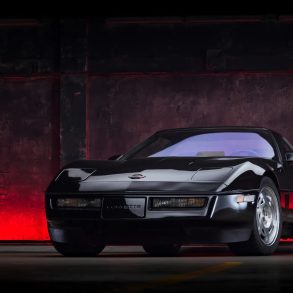1989 – 1991 Callaway Corvette Speedster
In 1989 Callaway introduced a Speedster which was the culmination of their styling, engineering and trimming talents. Their first example was a bright green ZR1, which had a severely chopped windscreen, no side mirrors, eighteen inch wheels and a vibrant blue leather interior stitched purposefully from Germany.
Nothing about Callaway’s Speedster was reserved, and this is especially true when investigating the specification. The car had 450 horsepower. This figure was a tremendous amount for 1989, and was one of the most powerful accepted by the American EPA for pollution standards. To create such a car, Callaway had to tackle several problems, and the first was fitting the new twin turbos, complex engine headers and airbox in an already cluttered engine bay.
Adding turbos to the existing GM engine meant Callaway had to develop several new systems. These included new engine mototronics, fuel injection system, and an exhaust system including custom headers and catalytic converters. One of the most complex tasks was redesigning the front crossmember to accommodate an airbox to feed the engine’s intake. The engines themselves were blueprinted, magnafluxed, fitted with Cosworth pistons and forged cranks alongside NASCAR units at Ed Lanier’s shop.
Beyond turbocharging, Speedsters received a competition suspension with coil overs, adjustable shocks, a Brembo brake package and massive 3 piece Oz racing wheels. At the time, the 17 inch wheels were the largest to fit on a Corvette, and Callaway even had prototype 18 inch wheels fitted to chassis #000. Bridgestone provided run-flat tires, which was an emerging technology, and one that freed the Speedster from they necessary spare wheel.
Outwards the car was styled by Paul Deutschman who made a very unique carbon fiber body having special air inlets and outlets for intercoolers. As a unique feature, twin power bulges met each headrest, and helped divide up the rear section of the Speedster. As a result of the integrated rear section, the Speedster remained permanently topless, a configuration which was suited for the California weather in which this car debuted.
To counter the ZR-1, for the 1991 model year, Callaway was able to bring up the output of the B2K option up to 402 hp (300 kW) and 582 lb⋅ft (789 N⋅m) of torque. However, before the Callaway Twin Turbo option went away, Callaway and Deutschman went to work to provide yet a more powerful and stunning car, the Callaway Speedster. A small amount of the final twin turbo cars and the Speedsters (10 Series 1 Speedsters w/ L98 Twin Turbo) were designated 500 Series Callaway Twin Turbo Corvettes. These unique cars came with OZ Racing wheels and Bridgestone Potenza tires, a “500 Series” dash plaque, “500 Series” intercooler badge, special car bra, car cover and floor mats. Despite and an initial planned production of 50 examples, only 12 Speedsters were manufactured. The last two were built from the ZR1 and called Super Speedsters with 750 bhp.
Videos & Reviews
Picture Gallery
Original Press Release
Callaway Cars Announces Forthcoming “Twin Turbo Speedster’ Concept Car
Vehicle to be Unveiled at the 1991 Greater Los Angeles Auto Show
WASHINGTON, D.C. – Callaway Cars, the small volume high-performance vehicle manufacturer based in Old Lyme, Connecticut has announced that they have developed a new Twin Turbo Speedster concept car and will be debuting it at the Greater Los Angeles Auto Show, January 5-13 at the Los Angeles Convention Center.
Reeves Callaway, President of Callaway Cars, made the announcement at the Washington Automotive Press Association (WAPA) November 8 meeting. He stated that production plans for the Speedster will be announced in Los Angeles.
‘The Callaway Twin Turbo Speedster, lie the Callaway Twin Turbo coupe and convertible is derived from a stock Corvette, but includes significant engineering and stylistic modifications.
One key feature, incorporated by Callaway designer Paul Deutschman, is a special wraparound glass windshield which extends the length of the doors to the driver and passenger headrests. This low-cut windscreen offers both the classic “speedster” appearance as well as the clean, ‘aerodynamic function of the ‘90s. Also part of the Callaway Speedster will be the stylish Aerobody™, a new 450 hp configuration of the Twin Turbo engine, and new dual hood scoops which wil be featured on all Callaway vehicles in 1991.
Callaway remarked that he has always admired the speedster styling. “We designed this car with the idea of continuing the tradition of coachbuilt American speedsters,” he said. “Paige, Stanley, Stutz, Studebaker and Auburn speedsters have been an influential part of the American car history – this is our entry.”
Another goal for developing the speedster relates to Callaway Cars’ status as a small-volume manufacturer.
“We take our manufacturer status (as certified by the Environmental Protection Agency) very seriously and, like other manufacturers such as General Motors and Ford, we realize that we need to initiate plans for the future, Callaway noted. “The Speedster is one means of evaluating possible directions for the expansion of the Callaway line.”
Callaway Cars is the manufacturer of the Callaway Twin Turbo Corvette, the fastest production car on the road today. This vehicle, which is capable of reaching a top speed in excess of 191 mph, may be ordered from Chevrolet as a regular production option (82K) on stock Corvettes, or through the newly-established Callaway dealer network
‘The Callaway Speedster is the latest development from the company which, in addition to the Twin Turbo, designed and developed the cylinder heads for the new Aston Martin Virage.
For more information on the Callaway Twin Turbo Speedster, contact Callaway Cars at (203) 434-9002.


